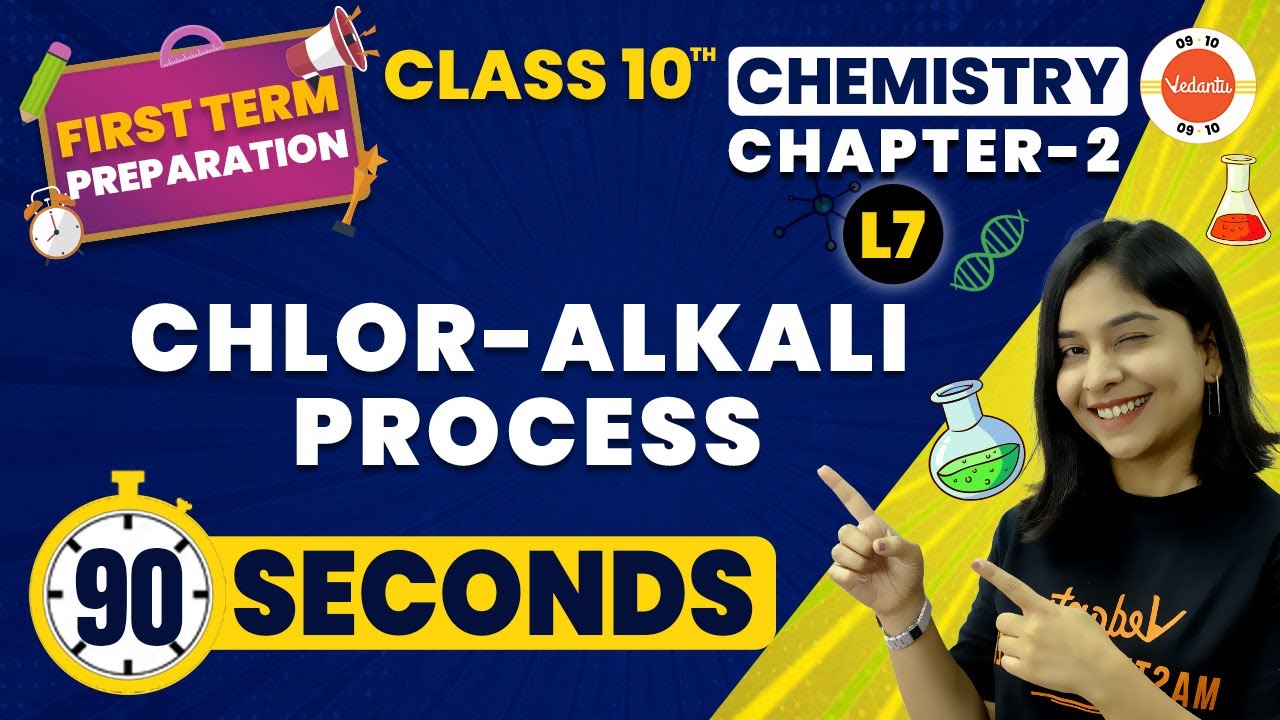Photochemical Reaction of Hydrogen and Chlorine
Summary
TLDRIn this engaging demonstration, Daniel Rosenberg showcases an electrolytic gas generator using concentrated hydrochloric acid to produce hydrogen and chlorine. He emphasizes the importance of removing oxygen from the water to prevent interference with the reaction. Through a series of light experiments, he tests various wavelengths, from red to ultraviolet, to identify their effects on the hydrogen-chlorine mixture. The dramatic conclusion reveals that ultraviolet light triggers an explosive reaction, producing hydrogen chloride and a notable cloud, illustrating the power and chemistry of these gases.
Takeaways
- 🔬 Takeaway 1: The demonstration involves a hydrogen-chlorine electrolytic gas generator.
- 💧 Takeaway 2: A water bath collects hydrogen and chlorine gases through water displacement.
- ⚡ Takeaway 3: The generator operates at almost 4 Volts and 3 Amps using carbon electrodes in 8-molar hydrochloric acid.
- ⏳ Takeaway 4: It is essential to run the gas generator for several hours to clear oxygen from the water before collecting gas.
- ☣️ Takeaway 5: Oxygen is a catalytic poison for the reaction between hydrogen and chlorine.
- 🧤 Takeaway 6: Chlorine gas can dissolve gold jewelry, so it's crucial to wear gloves or remove jewelry during the experiment.
- 📏 Takeaway 7: A stoichiometric mixture of hydrogen and chlorine is prepared in a quartz test tube for the reaction.
- 💡 Takeaway 8: Different light frequencies are tested to determine the threshold for the reaction between hydrogen and chlorine.
- 🔴 Takeaway 9: Red, orange, yellow, green, and blue lights do not trigger the reaction; only ultraviolet light does.
- 💥 Takeaway 10: Ultraviolet light causes an immediate reaction, producing hydrogen chloride, which creates a visible cloud in humid conditions.
Q & A
What is the primary purpose of the hydrogen-chlorine electrolytic gas generator demonstrated by Daniel Rosenberg?
-The primary purpose is to generate hydrogen and chlorine gas through the electrolysis of hydrochloric acid, which can then be used to demonstrate the reactivity of these gases.
What concentration of hydrochloric acid is used in the experiment?
-The experiment uses an 8-molar solution of hydrochloric acid, which consists of 2 parts acid and 1 part water.
Why is it necessary to run the water bath and gas generator for several hours before collecting gas?
-It is necessary to clear the oxygen from the water, as oxygen acts as a catalytic poison that inhibits the electrolysis reaction.
What safety precaution is mentioned regarding jewelry during the experiment?
-Participants are advised to wear gloves or remove any gold jewelry, as chlorine can dissolve gold.
What was the outcome when red light was used in the experiment?
-No reaction was observed with red light, indicating that it does not provide sufficient energy to initiate the reaction between hydrogen and chlorine.
Which light frequency finally triggered a reaction in the hydrogen-chlorine mixture?
-The ultraviolet light triggered an almost immediate reaction, producing hydrogen chloride gas.
What happens to the hydrogen chloride gas in the humid air of the lecture hall?
-In the humid air, the hydrogen chloride gas forms a visible cloud, demonstrating the product of the reaction.
How does the bubbling of chlorine through the water bath affect the water's composition?
-Bubbling chlorine through the water saturates it with chlorine and removes oxygen, making it suitable for the electrolysis process.
What equipment is used to collect the hydrogen and chlorine gas during the demonstration?
-A quartz test tube is used to collect the gases via water displacement, with a glass elbow facilitating the filling process.
What role do carbon electrodes play in this experiment?
-The carbon electrodes conduct electricity to drive the electrolysis process, facilitating the separation of hydrogen and chlorine ions from the hydrochloric acid.
Outlines

Esta sección está disponible solo para usuarios con suscripción. Por favor, mejora tu plan para acceder a esta parte.
Mejorar ahoraMindmap

Esta sección está disponible solo para usuarios con suscripción. Por favor, mejora tu plan para acceder a esta parte.
Mejorar ahoraKeywords

Esta sección está disponible solo para usuarios con suscripción. Por favor, mejora tu plan para acceder a esta parte.
Mejorar ahoraHighlights

Esta sección está disponible solo para usuarios con suscripción. Por favor, mejora tu plan para acceder a esta parte.
Mejorar ahoraTranscripts

Esta sección está disponible solo para usuarios con suscripción. Por favor, mejora tu plan para acceder a esta parte.
Mejorar ahoraVer Más Videos Relacionados

Reactions between Metals and Acids

Proses Pembuatan Soda Api (NaOH) dengan Elektrolisis Membran ion Exchange

Making table salt using sodium metal and chlorine gas

Praktikum Ledakan dengan Pemutih

Hydrogen Pop Test Experiment

Chlor Alkali Process One Shot in 90 Seconds | Acids Bases and Salts | NCERT Class 10 Chemistry Ch-2
5.0 / 5 (0 votes)
